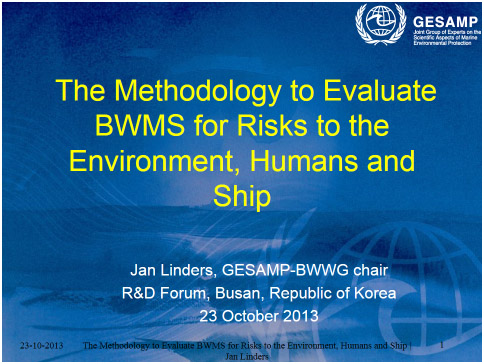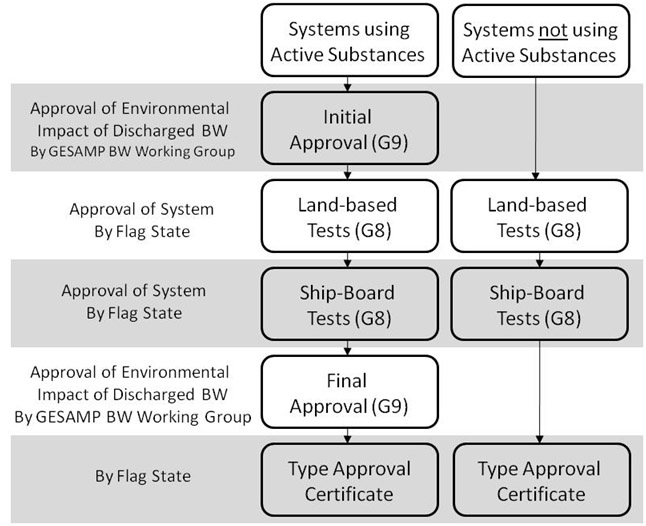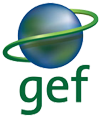The Response > The ballast water treatment technology
Overview of Ballast Water Treatment Technologies
Ballast Water Management technologies could be defined as: procedures, activities and mechanisms which are able to reduce or eliminate all or part of risks associated with discharge of non-indigenous species in ships’ ballast water.
BWM methodologies could be classified in many different ways. Technology, biology, capacity, costing, size, regions, regulations and many other parameters could be used to categorise various systems. A large number of BWM procedures, activities and mechanisms have been recommended, approved and made available to the marine industry. They have largely been classified according to the technology or technologies which they use to treat the Ballast Water. Groupings such as Mechanical, Chemical and Physical are very common.
Options being considered include:
- Mechanical treatment methods such as filtration and separation.
- Physical treatment methods such as sterilisation by ozone, ultra-violet light, electric currents and heat treatment.
- Chemical treatment methods such adding biocides to ballast water to kill organisms.
- Various combinations of the above.
To treat and manage ballast water onboard ships, BWM technologies must conform to existing regulations. In addition, technologies must be able to operate within a diverse range of conditions. Therefore, a number of legislative, biological, operational and technical parameters are associated with this interaction. The testing protocols prescribed under the Convention ensure that the technologies take these into account.
Guidelines for approval of ballast water management systems – D2 (G8)
Ships conducting ballast water management shall discharge less than 10 viable organisms per cubic metre greater than or equal to 50 micrometres in minimum dimension and less than 10 viable organisms per millilitre less than 50 micrometres in minimum dimension and greater than or equal to 10 micrometres in minimum dimension; and discharge of the indicator microbes shall not exceed the specified concentrations.
The indicator microbes, as a human health standard, include, but are not be limited to:
- Toxicogenic Vibrio cholerae (O1 and O139) with less than 1 colony forming unit (cfu) per 100 millilitres or less than 1 cfu per 1 gram (wet weight) zooplankton samples;
- Escherichia coli less than 250 cfu per 100 millilitres;
- Intestinal Enterococci less than 100 cfu per 100 millilitres.
The G8 Guidelines are aimed primarily at Administrations, or their designated bodies, in order to assess whether ballast water management systems meet the standard as set out in regulation D-2. In addition, this document can be used as guidance for manufacturers and shipowners on the evaluation procedure that equipment will undergo and the requirements placed on ballast water management systems. The guidelines address various aspects of the approval process, including the detailed requirements of land-based and ship-board testing of systems, and the approval and certification procedures.
Please see full G8 text for more information as well as BWM.2/Circ.43, Amendments to the Guidance for Administrations on the type approval process for ballast water management systems in accordance with Guidelines (G8), superseding (BWM.2/Circ.28).
Procedure for approval of ballast water management systems that make use of active substances – D-2 (G9)
The G9 Guidelines describe the approval process for systems that make use of ‘active substances’. ‘Active substances’ are defined by the Convention as “substances or organisms, including a virus or a fungus, that have a general or specific action on or against harmful aquatic organisms and pathogens”. Active substances and preparations may be added to the ballast water or be generated onboard ships within the BWM system. These substances must comply with the BWM Convention. To comply with the Convention, BWM systems that make use of active substances (or preparations containing one or more active substances) need to be approved by IMO, based on a procedure developed by the Organization. The objective of this procedure is to determine the acceptability of the active substances in ballast water management systems concerning ship safety, human health and the aquatic environment. The procedure is thus provided as a safeguard for the sustainable use of active substance, and is not intended for the evaluation of the efficacy of the active substances (the efficacy of BWM systems, including those that make use of active substances, should be evaluated in accordance with the G8 Guidelines).
The proposal for approval of an active substance must include:
- data on effects on aquatic plants, invertebrates, fish and other biota, including sensitive and representative organisms,
- data on Mammalian Toxicity,
- data on environmental fate and effect under aerobic and anaerobic conditions,
- physical and chemical properties of the active substance and preparations and the treated ballast water,
- analytical methods at environmentally relevant concentrations.
Please see full G9 text for more information.
Section 8 of the G9 sets out the methodology to be followed for the approval of such systems and requests IMO to establish a Technical Group to review the proposals submitted by Members and report to the Organization on its findings. Based on the report of the Group, the Marine Environment Protection Committee decides on the approval of a proposal submitted by a Member of the Organization.
The technical Group is the GESAMP-Ballast Water Working Group. GESAMP is an advisory body consisting of specialized experts nominated by the Sponsoring Agencies (IMO, FAO, UNESCO-IOC, UNIDO, WMO, IAEA, UN, UNEP and UNDP). Its principal task is to provide scientific advice concerning the prevention, reduction and control of the degradation of the marine environment to the Sponsoring Agencies.
Information about GESAMP and its reports and studies can be found at: http://gesamp.org.
The GESAMP – “Ballast Water Working Group on Active Substances”, GESAMP – BWWG, or WG 34, was established in November 2005 to review any proposals submitted to IMO in preparation for the BWM Convention for approval of Ballast Water Management systems (further referred to as treatment systems) that make use of ‘Active Substances’. WG 34 reports to IMO on whether such proposals present unreasonable risk to the environment, human health, property or resources in accordance with the G9. WG 34 does not evaluate the operation or design of the systems, or their effectiveness, only their potential for environmental and human health risks.
The approval of ballast water management systems that make use of Active Substances is part of the regulatory function of the Organization and its Committees and the GESAMP-BWWG has only an advisory role.


Administration approval
Ballast Water Management systems must be approved by the Administration in accordance with IMO Guidelines (Regulation D-3 Approval requirements for Ballast Water Management systems). These include systems which make use of chemicals or biocides; make use of organisms or biological mechanisms; or which alter the chemical or physical characteristics of the ballast water.
BWMS must be certified through specific IMO processes and testing guidelines designed to ensure that the technologies reliably meet IMO standards, do not have adverse environmental impacts and are safe and suitable for shipboard use. Individual Type Approval Certifications are granted by a Flag Administration, often in consultation with a recognized Classification Society, and based on results of testing conducted under the G8. G8 includes both land-based testing and shipboard testing of efficacy but only provides very general guidance on assessing the ability of BWMS to safely and reliably meet the D-2 discharge standards. The methods used in land-based and shipboard certification testing of BWMS can also be found the US EPA ETV Generic Protocol for the Verification of Ballast Water Treatment Technology (2010), and in the SOPs of several ballast water test facilities, such as the Maritime Environmental Resource Centre (MERC).
In January 2010, a first ever forum for organizations involved in the testing of BWM treatment technologies was conducted in Malmö, Sweden. The meeting was supported by the Global Industry Alliance, and was a first step towards increased dialogue and harmonization between the test facility operators.
Following that first meeting, the test facilities convened for a second time in 2010 in Singapore where the group agreed to start formalizing their commitments to harmonize their approaches to testing under the G8/G9 Guidelines through an MoU between the facilities. The group met again in Istanbul, Turkey in 2011 and in Busan, Republic of Korea in 2013.
A Memorandum of Understanding (MoU) establishing the GloBal TestNet was signed on 21 October 2013 by representatives of 16 ballast water treatment system testing organizations. The GloBal TestNet aims to achieve greater levels of standardization, transparency and openness in the process of technology approvals and thus raise the standards of quality control and quality assurance, in what can be a complex testing process. The signing marked an important milestone in the global effort to address the problem of invasive species transferred through ships’ ballast water and addresses concerns within the shipping industry about a perceived lack of standardisation and harmonization among ballast water treatment technology test organizations. You can read the Press Release here.





